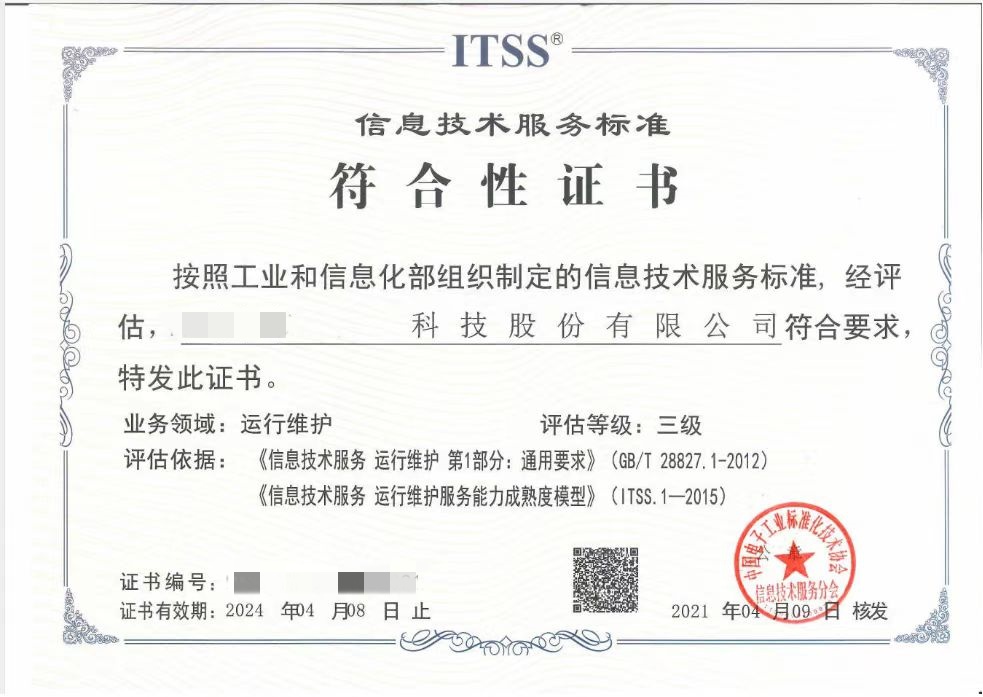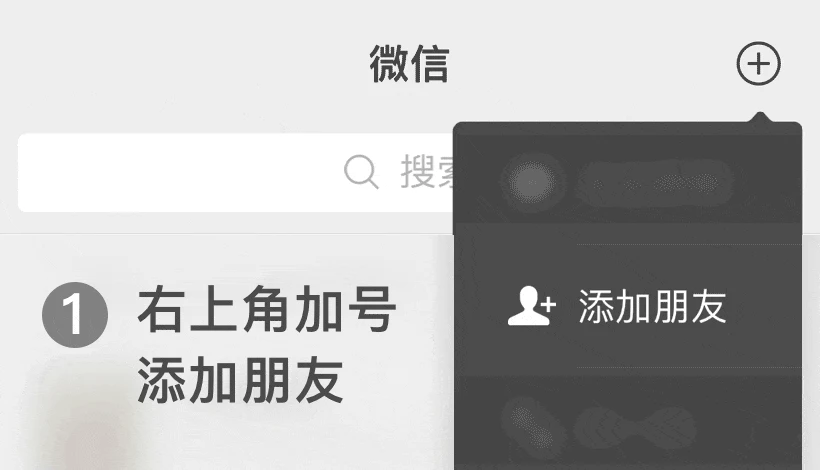
 Professional services are guaranteed
Professional services are guaranteed One on one full process guidance
One on one full process guidance Efficient and fast experience
Efficient and fast experienceITSS (Information Technology Service Standards) is a systematic and comprehensive library of information technology service standards developed by the National Information Technology Service Standards Working Group (ITSS Working Group) under the joint guidance of the Ministry of Industry and Information Technology and the National Standardization Management Committee. This standard comprehensively regulates IT service products and their constituent elements, covering the entire lifecycle of IT services, including ten major areas such as consulting design, operation and maintenance services, cloud computing, and data centers. ITSS certification is applicable to enterprises and institutions that provide IT operations, cloud computing, big data, software development, system integration and other services, and is an important basis for measuring the IT service capabilities of enterprises. Through ITSS certification, enterprises can optimize service processes, improve customer satisfaction, and gain stronger competitive advantages in the market competition.

(Figure 1: ITSS principle)
Based on a tracking study of 500 certified companies (CCID, 2023), ITSS certified companies have demonstrated significant competitive advantages:
1. Improvement of service capability
Improve service delivery efficiency by 40% -60%
The average response time for major accidents has been shortened to 1.5 hours
Customer satisfaction reaches over 95%
2. Cost optimization
Reduce operation and maintenance labor costs by 20% -35%
The occurrence rate of repetitive problems has decreased by 50%
Resource utilization rate increased to 85%
3. Risk control
Establish over 200 risk control points
Service continuity reaches 99.99%
100% compliance audit pass rat
The ITSS Capability Maturity Model divides service capabilities into four levels (Level 4 to Level 1),
(I.) Level classification and core competency requirements
| Level | Capability Characteristics |
|---|---|
| Level 4 | Basic guarantee type |
| Level 3 | Collaborative improvement type |
| Level 2 | Quantitative optimization type |
| Level 1 | Innovation-led type |
(II.) Application Requirements by Level
| Level 4 (Basic Level) | Level 3 (Expanded Level) | Level 2 (Improvement Level) | Level 1 (Enhancement Level) | |
|---|---|---|---|---|
| Preconditions | -The enterprise is legally registered and has been in operation for at least 12 months; -There have been no major information security incidents in the past 3 years (proof of no violations from the Cyberspace Administration of China or the public security department is required); -Has passed ISO 9001 quality management system certification (certificate is valid) | Hold a Level 4 certificate for at least 18 months and pass the annual supervision and audit (with no serious non conformities). | Holding a Level 3 certificate for at least 24 months, with a compound annual growth rate of service income of at least 10% in the past two years (requiring an audit report) | Holding ITSS Level 2 certificate for at least 36 months, with an average annual service income of at least 120 million yuan in the past three years (audited by an accounting firm) |
| Capability Requirements | -At least 3 completed information technology service project cases, with a single project contract amount of ≥ 500000 yuan (contracts, acceptance reports, and customer follow-up records must be provided); -Establish a service directory system that complies with the GB/T 29264 standard, covering at least four primary categories such as consulting design, operation and maintenance; -At least 3 ITSS registered service engineers (who must pass the CESA exam), with a certification rate of at least 40% for core positions (such as project managers) (certification scope includes ITSS, PMP, or ITIL 4 certification). | -Accumulated implementation of ≥ 8 projects, of which at least 2 are cross year projects (contract period ≥ 12 months); -Realize process interoperability among R&D, delivery, and operations departments (process diagrams and collaborative meeting minutes are required); -Use digital management platforms such as Jira and ServiceNow to achieve a work order turnover rate of ≥ 90%; -Define and monitor ≥ 15 KPIs (such as SLA achievement rate, fault response time), with data collection automation rate ≥ 70%. | -Establish big data analysis platforms (such as ELK, Tableau) to achieve real-time visualization of service process data, and output ≥ 3 quantitative analysis reports (such as capacity prediction, fault root cause analysis); -Implement predictive maintenance projects in ≥ 2 cases (provide case reports and customer proof); -Historical problem recurrence rate ≤ 5% (based on event management database statistics). | -Deploy AI Operations system (AIOps) to achieve automatic handling of ≥ 80% of routine events (provide system screenshots and logs), establish a service supply chain blockchain traceability system (provide technical architecture diagram and node data); -Lead the development of at least 2 national/industry standards (such as national standards, industry standards, and local standards), and publish at least 1 industry report annually (requiring public publication or filing with the Ministry of Industry and Information Technology) |
| Capability Requirements | -System operation: The service management system (such as ITSM tool) has been officially running for at least 6 months, providing system logs and operation records; -Internal audit: Complete at least one internal audit and management review, retain audit reports and improvement records; -Customer feedback: The coverage rate of customer satisfaction surveys in the past 12 months is 100%, with an average satisfaction score of ≥ 80 points (using CESA standard questionnaire). | -Senior personnel: ITSS registered senior project managers ≥ 2 (must pass CESA advanced examination); -Training system: Establish an internal training mechanism, with an annual average of at least 24 training hours per person (provide training plans and attendance records); -Knowledge base: Accumulate technical documents ≥ 500, knowledge reuse rate ≥ 30% (as evidenced by system backend data). | -R&D achievements: Obtaining at least 1 invention patent or at least 3 software copyrights related to services; -Technical investment: R&D expenses have accounted for ≥ 5% in the past two years (requiring special audit of financial statements); -Industry contribution: Participated in the development of at least 1 group standard/industry white paper (requiring standard release documents). | -Industry university research cooperation: co build at least one joint laboratory with universities/research institutions (requiring a cooperation agreement and a list of achievements); -Customer ecosystem: serving at least 5 Fortune 500 customers (with contracts and acceptance certificates required); -Customer loyalty (NPS) ≥ 90 points, renewal rate ≥ 95%. |
3. Adaptation to emerging technologies: Applicants for Level 2 or above must provide an explanation of the integrated application plan for cloud computing, AI, and other technologies.
Corporate legal documents:
Copy of Business License (Three in One)
Organization Code Certificate (if applicable)
Social Security Payment Certificate (for the past 6 months)
System documents:
Service Management Manual (including policy objectives)
Procedure Files (34 standard processes)
Work Instructions (Level 3 documents)
Process record:
Service desk records (complete data for the past 3 months)
Change management records (annual statistics)
Event handling closed-loop evidence chain
| Level | Special material requirements |
|---|---|
| Level 4 | Service catalog matrix table, basic KPI statistical report |
| Level 3 | Screenshots of process digitization and minutes of cross departmental collaboration meetings |
| Level 2 | Data analysis model source code, predictive maintenance case package |
| Level 1 | Intelligent decision-making system testing report, industry standard release certificate |








1. Gap analysis stage (5-15 working days)
Using ITSS-CMMI assessment tool for maturity diagnosis
Output gap analysis report (including improvement roadmap)
2. Key points of on-site audit:
Personnel Capability Verification: Randomly select 10% of certified personnel for practical operation
Process Compliance Review: Tracing the Full Lifecycle Documents of Three Typical Projects
Technical Capability Test: Concurrent Processing Capability of Stress Testing Service Management Platform
3. Expert review criteria:
Level 4: 1 chief reviewer+2 reviewers
Level 2: 3 industry experts+2 technical experts
Level 1: 5 national level review experts (including 2 members of the standard drafting team




Wechat ID:Siterui888888
Add a wechat friend to get free plans and quotations


 Contact
Contact
號.jpg)



 定制化解決方案
定制化解決方案 專業(yè)咨詢指導(dǎo)
專業(yè)咨詢指導(dǎo) 透明化服務(wù)
透明化服務(wù) 長期顧問式合作
長期顧問式合作